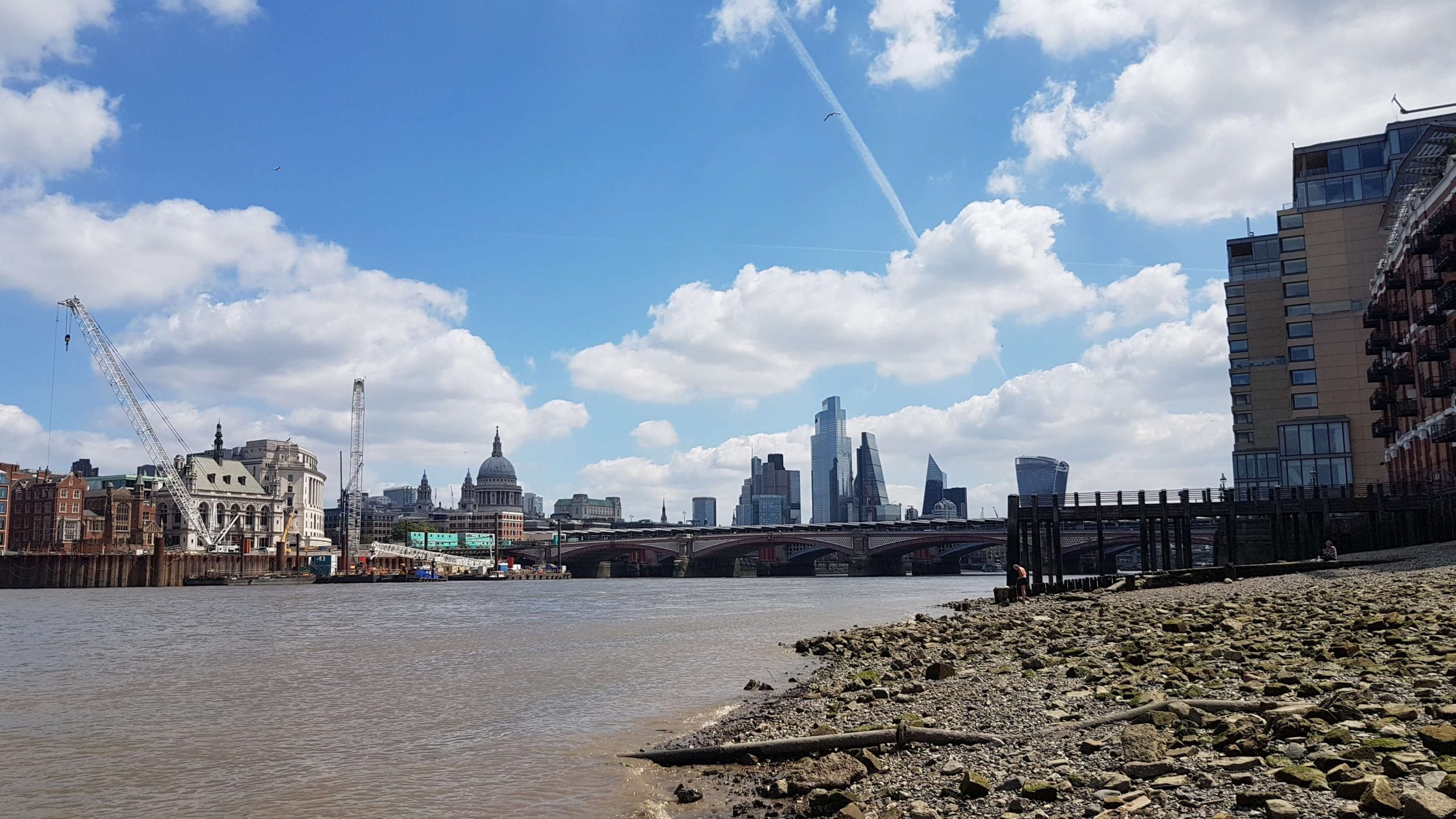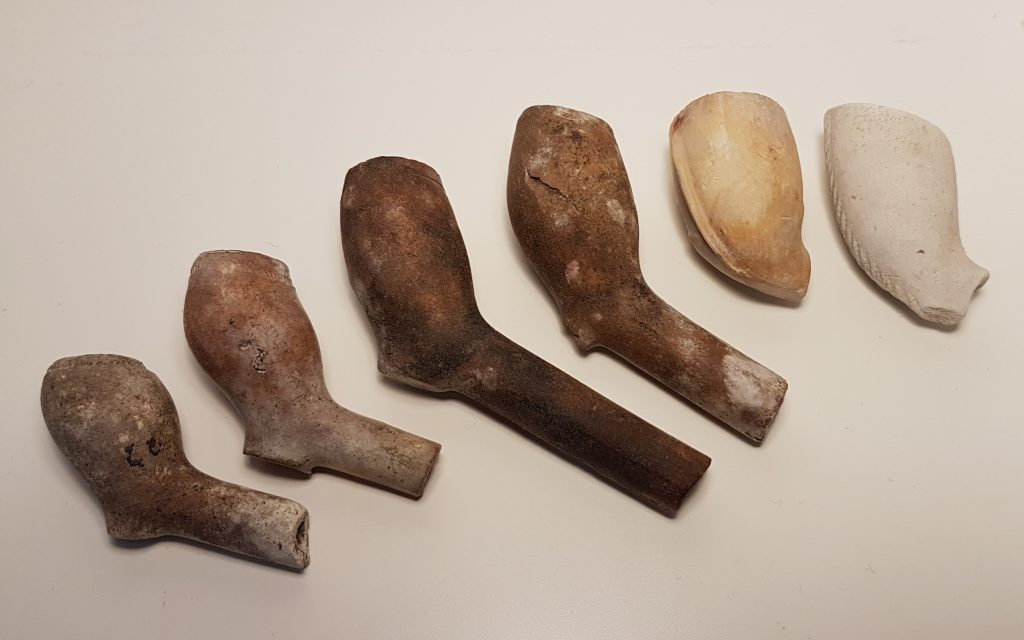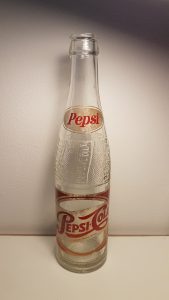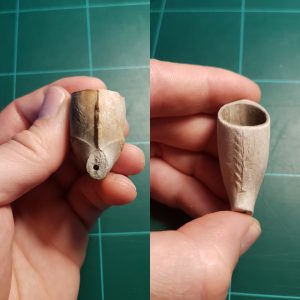PhD candidate, Luis Moliner Cachazo, started mudlarking in January 2021. He tells us what mudlarking is and shows us some of the historical objects he’s found along the way.
The word Mudlarking refers to searching objects in the river mud at low tide. The first time I heard about this activity was on Instagram, when, by chance, I came across one of the pictures by Lara Maiklem (Instagram: @london.mudlark), a very prolific mudlark who is the author of “Mudlarking: Lost and Found on the River Thames” and “A Field Guide to Larking”. I started scrolling down her profile and I got immediately fascinated by all the items and descriptions of what she has collected over the years. Since I love history and I live in London, just 15 min by bike from the river, I decided to give it a try myself, as it seemed the perfect excuse to get outdoors, do some exercise and learn during lockdown, and now I’m totally hooked!

But let’s start with the basics, the river Thames from the mouth up to Teddington lock is tidal, which means that there are two low and two high tides per day. During low tide the water level can drop up to 7 meters (almost 23 feet)! which means that the foreshore in London gets exposed for several miles, making it one of the biggest archaeological sites in the world!
Indeed, you can find objects from different historical periods, since the Thames has been used as a transportation route, but also as a sewer and dump for millennia. In Medieval times, animal remains were thrown away after feasts, that is why bones of sheeps, cows, wild-boars, etc. are scattered all around. During the fire of London in 1666, people had to leave their homes in a rush, crossing the river with whatever they could rescue, some of their belongings probably fell onto the river. In Victorian times, smoking clay pipes were so popular and cheap to produce, that many were thrown away when they got clogged, even after just one use. Sadly, and more recently, construction debris (including asbestos), batteries of all types, or even PPE contribute to increase river pollution. For all these reasons and the potential risk of contracting Weil’s disease/Leptospirosis (caused by the bacteria Leptospira, present in rat urine), the use of gloves while mudlarking (and perhaps hand sanitiser) is a MUST! Rubber gloves will protect your hands better, avoiding cuts from sharp objects such as glass fragments, nails or pins.

If you want to have a better idea of what it can be found on the Thames, I really recommend a visit to the Museum of London, where an impressive collection of archaeological items collected by mudlarks is kept on permanent display. Incredible examples of flint tools and stone axe heads from the Stone Age, daggers from the Bronze Age, Roman hairpins and glass beads, Victorian smoking clay pipes (I have a soft spot for these) and many more.

It is important to mention that anyone who wishes to search the Thames foreshore in any way for any reason, must hold a foreshore permit issued by the Port of London Authority, and the only requirement for this is to pay the fee (which is currently £90.00 for 3 years…), but I can assure you that the excitement of finding all sort of ancient objects and being able to keep them is worth the cost!
It is also very important to check exit routes (nearest stairs, etc.) and the tide times beforehand, as it varies every day and at each location (I use the BBC weather website), the water can rise very quickly so it is better to avoid being stuck and having to call emergencies for help.

With all these precautions in mind and my license I started mudlarking in January 2021, since then, I have found many clay pipes, some as old as 1610-40 and with the maker’s initials, Victorian bottles (one still with the cork), pottery fragments, vulcanite and glass stoppers, and the find that I love the most, because of its (near) mint condition: a vintage Pepsi bottle from the 1950s (in the picture).
Last month I wanted to share the excitement of this activity with others, and get them to find their own items, and I organised a guided walk in Southbank with students from the Geography department at King’s. It was a really nice experience! We were lucky with the weather and found some clay pipes and all sorts of pottery and glass fragments. At the end of the session we rewarded ourselves with a very tasty lunch at Southbank food market. I intend to organise more mudlarking sessions in the future, so keep an eye on the Geography news bulletin!

Finally, every September the Thames Festival Trust organises the Totally Thames festival (https://thamesfestivaltrust.org), with loads of activities related to the mighty river. This year includes a free mudlarking exhibition at Chiswick Pier Trust, and guided walks organised by well-known mudlarks, such as Dr Fiona Haughey (Twitter: @DrFionaHaughey) and Jason Sandy (Instagram: @jasonmudlark), one of the authors of “Thames Mudlarking: Searching for London’s Lost Treasures”.
You can also follow Luis on Instagram on the handle @ _lmoliner_